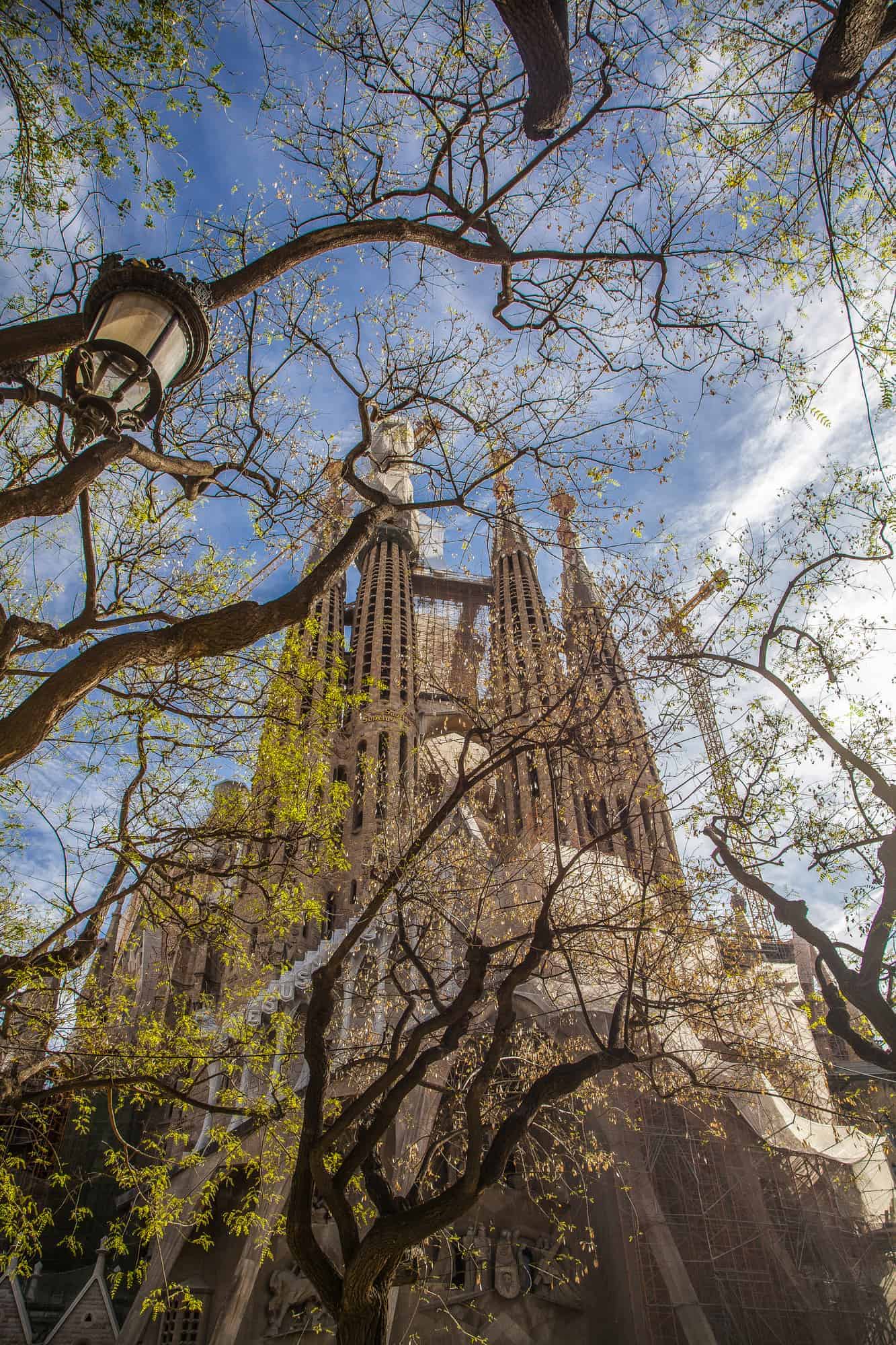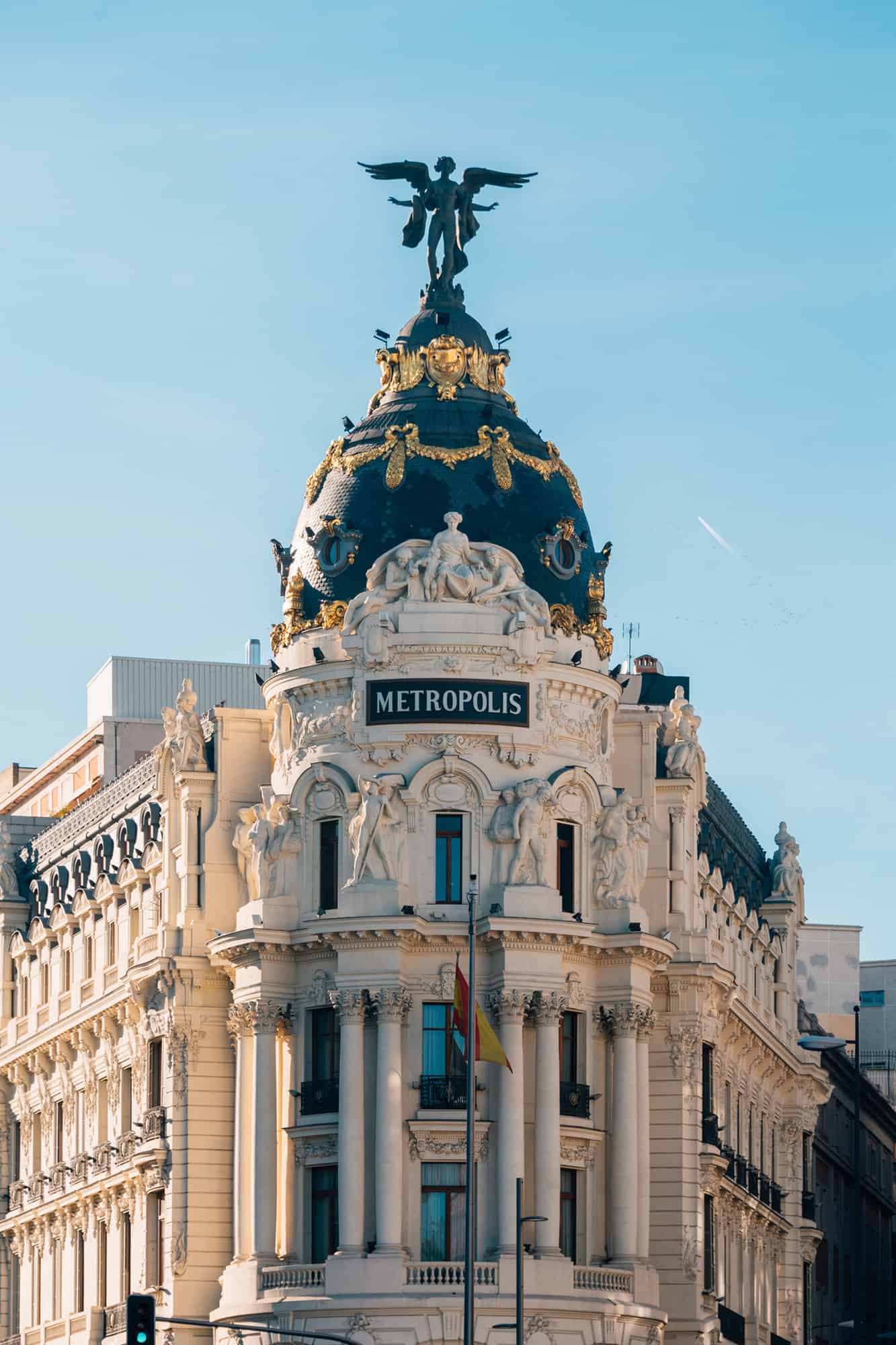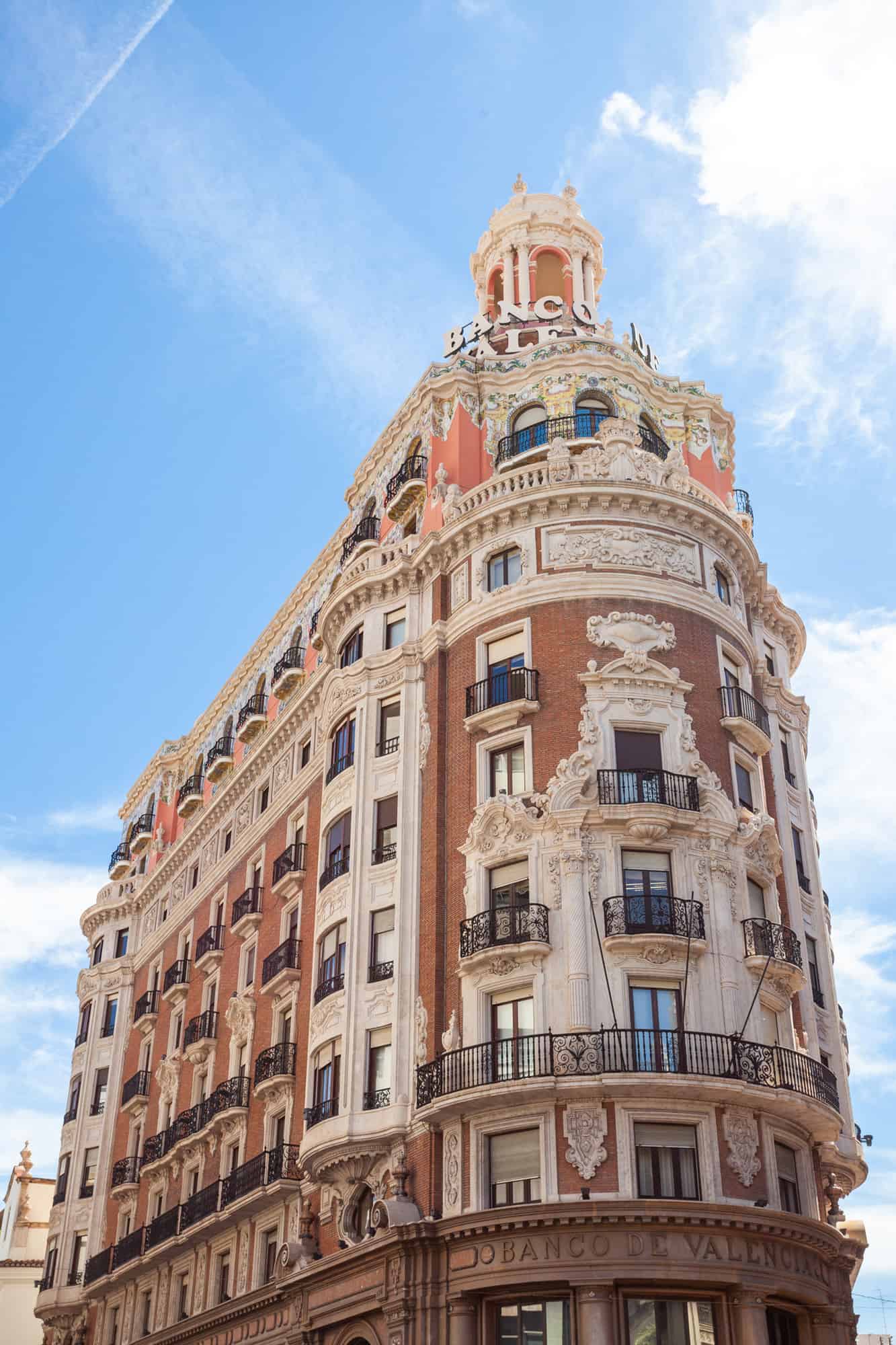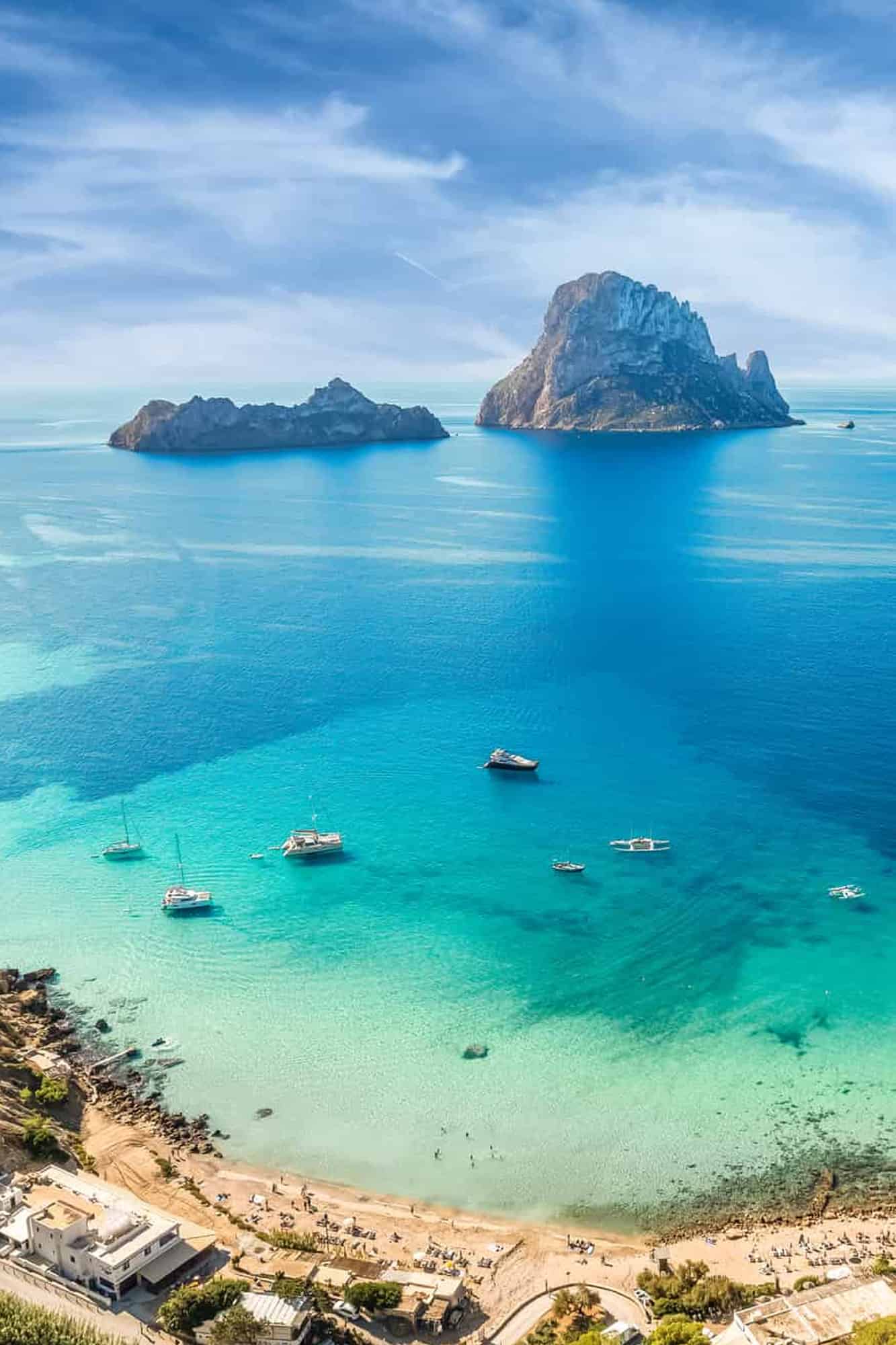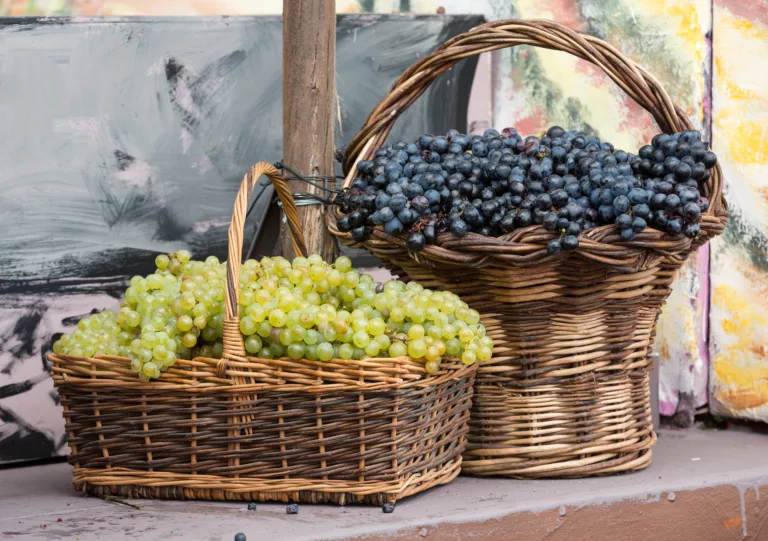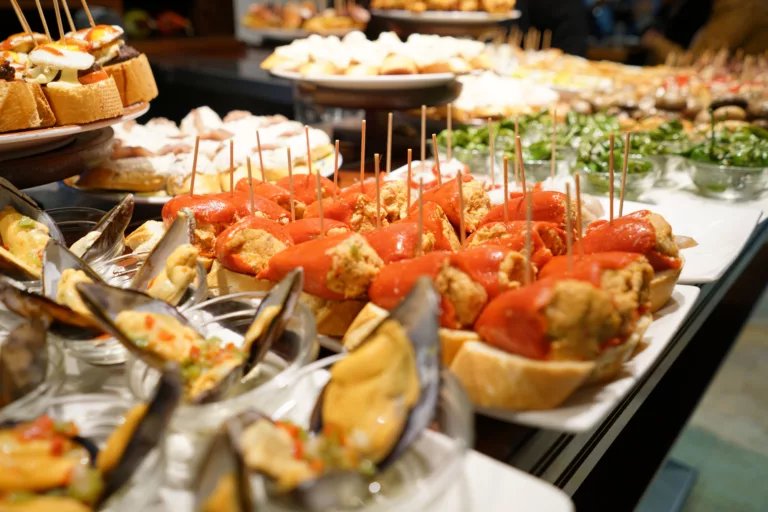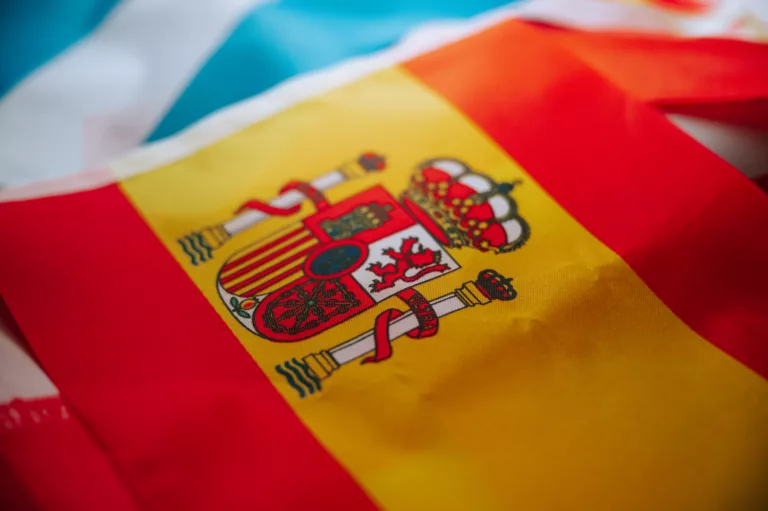Traditional Clothing in Spain
You might have seen them in Western movies, señoritas dancing in boldly colored Flamenco dresses or cowboys wearing vests and tiny pants. Did you also believe that these represent Spain’s national clothing? I’m afraid they do not. Unlike most countries, Spain does not have any single national costume. I have, however, witnessed diverse traditional outfits throughout different regions of Spain.
In the East, women are seen wearing Fallas made of silk fabrics. In the South, performers wear iconic flamenco red, black, or white costumes, with their hair in a bun and a rose behind their ear. So, if you’re planning to visit Spain this holiday season and indulge in the beauty of its traditional attire, then keep reading. This blog will be your best guide on traditional clothing in Spain.

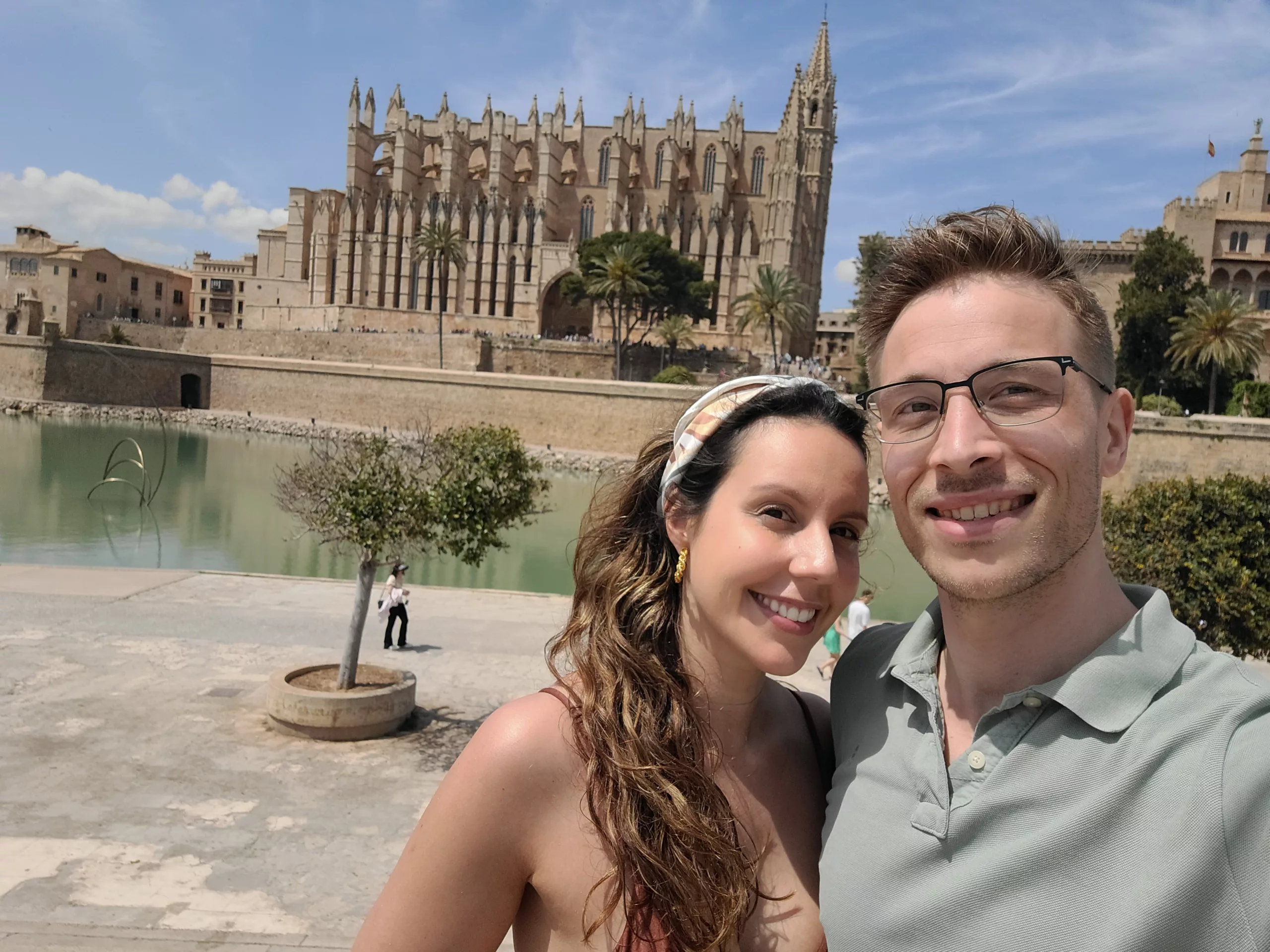
Hi, we’re Timon & Filipa!
We travel across Spain in our motorhome, Speedy, and update TravelSpain24 with fresh content, practical tips, and personal stories from the road. Our goal is to help you experience Spain beyond the typical tourist trails.
1. Flamenco’s Signature: The Traje de Flamenca
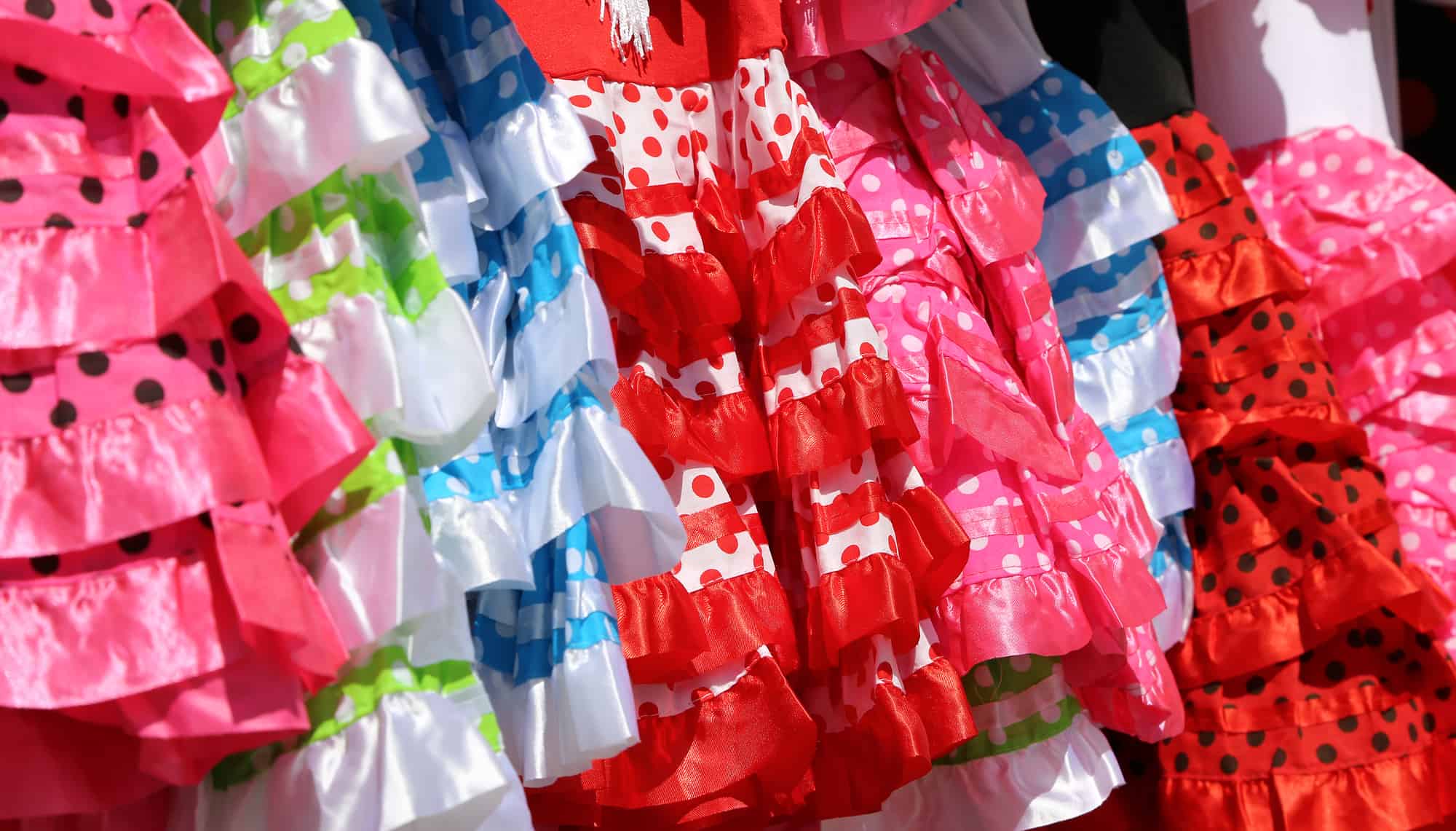
Apart from a wedding dress, the flamenco dress is the most beautiful dress a woman can ever wear in Spain. Traje de Flamenca, or “Flamenco dress,” is worn on spring fairs (known locally as “ferias”) in Southern Spain. The strong presence of flamenco costumes in these celebrations symbolizes tradition and prosperity in the region.
Today, flamenco clothing is considered traditional Andalusian clothing, but it actually originated from the Gypsies (Romans) of Spain in the 19th and early 20th centuries. Traje de Flamenca is beautifully decorated in plain or dotted patterns. Often adorned in bright colors such as red or yellow and have ruffles on the skirt and sleeves.
The flamenco dress gives a beautiful swirling look to the dancers’ costumes which makes their dance performances even more magical. The flamenco skirt is a powerful extension of women’s right to self-expression and divine femininity, and at Feria, every woman is a queen. She is revered, adored, and worshiped equally throughout the day.
Andalusia, Seville, and even Madrid are very passionate about flamenco. You’ll quickly find many Flamenco shows in Madrid; in Andalusia, you can see a sea of flamenco costumes on the streets. You definitely want to see Spain during the festive season. It’s a sight to behold.
Flamenco costumes have stood the test of time and continue to be reinvented, becoming an essential part of Spanish culture and tradition.
2. The Charm of Valencia: Fallero and Fallera
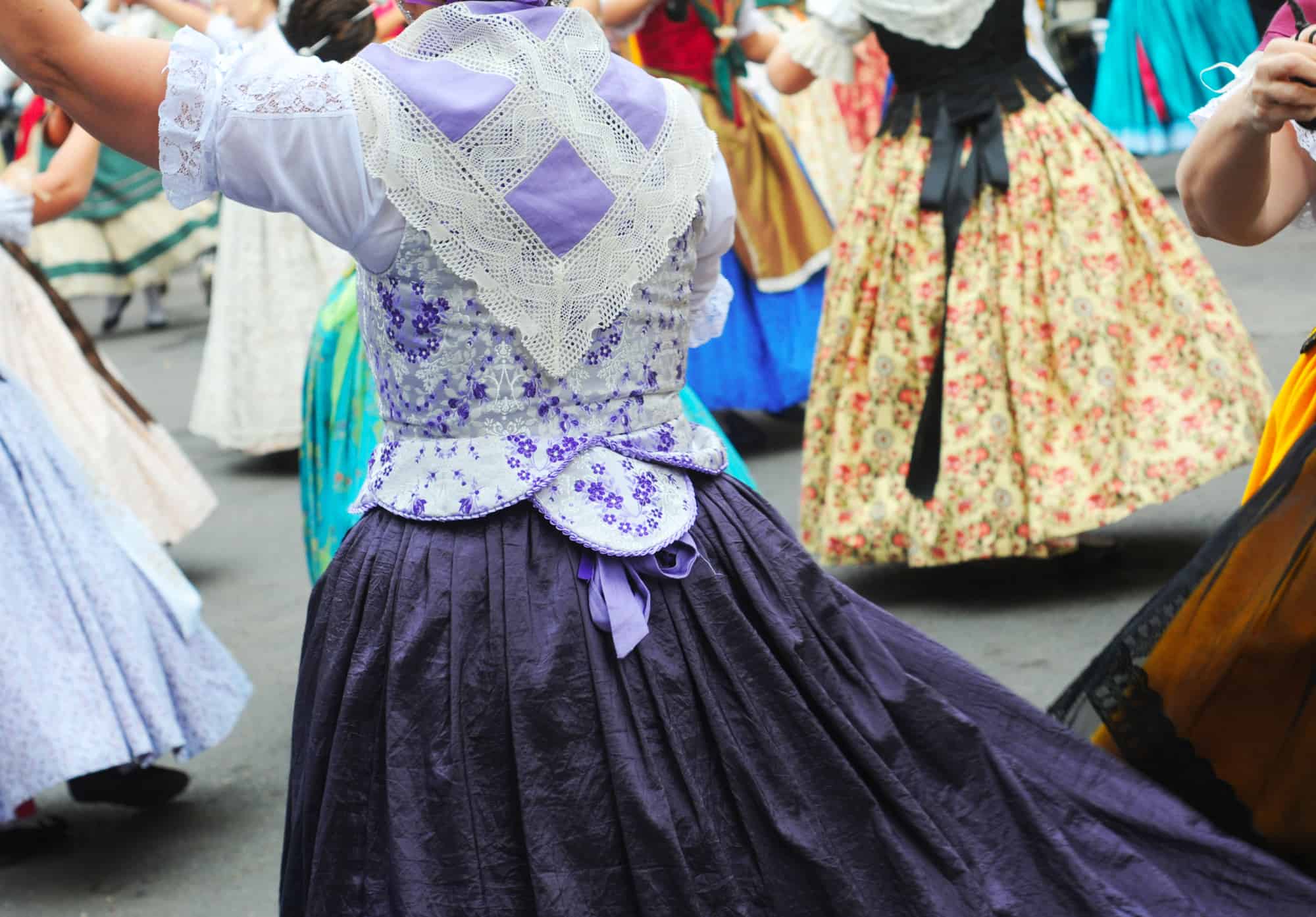
Traditional clothing in Spain is synonymous with fine clothing in the Valencian region. Today, Valencian women wear traditional Fallera dresses to celebrate the arrival of spring during the Valencian Fallas Festival in March. But in the 18th century, the Fallera dress was the typical work clothes of urban farmers. Women wore these dresses every day long before the Fallas became a local celebration.
In Valencia, the capital of the autonomous region of Spain, you will find the expressions “traje de Fallera” (for women) and “traje de saragüell” or “traje de torrentí” (for men). This dress is made of pure silk fabric and lace. Women’s accessories include a headdress (traditional veil), peinete, cholla (unique brooch), silk belts, hand-woven shoes, and flowers. You will also find a unique hairstyle with pieces of hair carefully braided on the side.
In March, the Valencian community celebrates the tribute the carpenters gave to Saint Joseph. They burn huge wooden sculptures as a memory of this living tradition. During the Las Fallas celebration in March, Valencia is worth visiting to witness Falleros, Falleras, giant sculptures, and amazing Valencian hospitality.
3. Madrid’s Classic: Chulapo and Chulapa
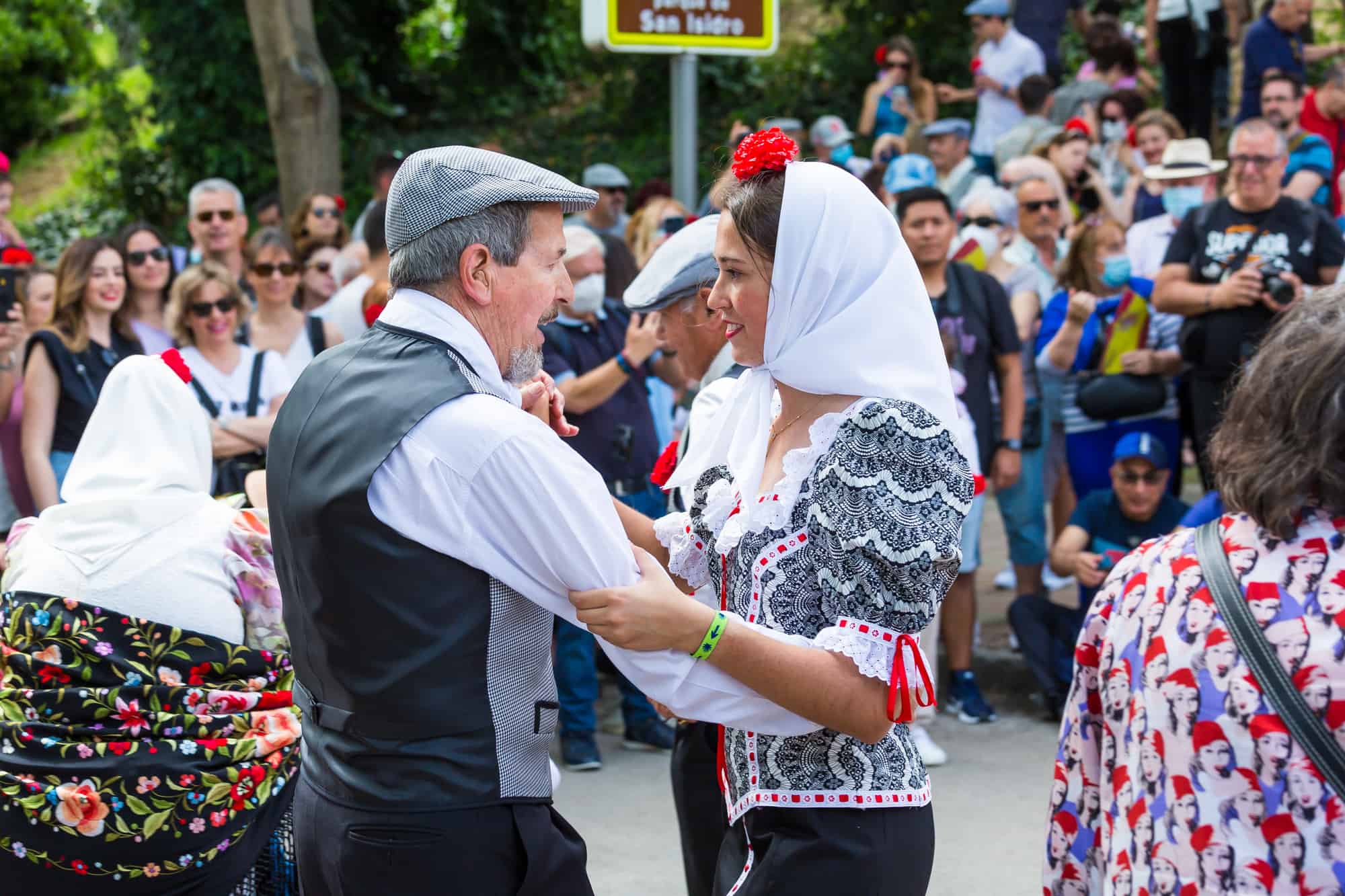
Chulapo and Chulapa are traditional statement dresses in the wardrobe of Spain. The history of this dress dates back to the 19th century when women wore Chulapas to perform in musical shows called Zarzuelas. Today, every year on May 15, tourists and locals in Madrid line the streets to celebrate the “Madrid Chulapo and Chulapa” festival.
Chulapo and Chulapa are also the nicknames of the residents of the Malasaña community. Typical clothing for men are dark trousers, a hat, a white shirt, and a waistcoat decorated with red or white carnations. Women wear carnation scarves of the same color as the men and white shirts with patterns on the legs. They wear long, tight dresses and their signature handkerchiefs, manilla shawls, and two carnations in their hair.
If you plan to stay in Madrid in May, attending this festival will leave you with unforgettable memories. It’s the best time to visit Madrid. You can also explore neighborhoods such as Sol, Lavapiés, or Malasaña. Madrid holds fun stories and captivating destinations that are worth seeing.
4. The Basque Beauty: Baseritarra
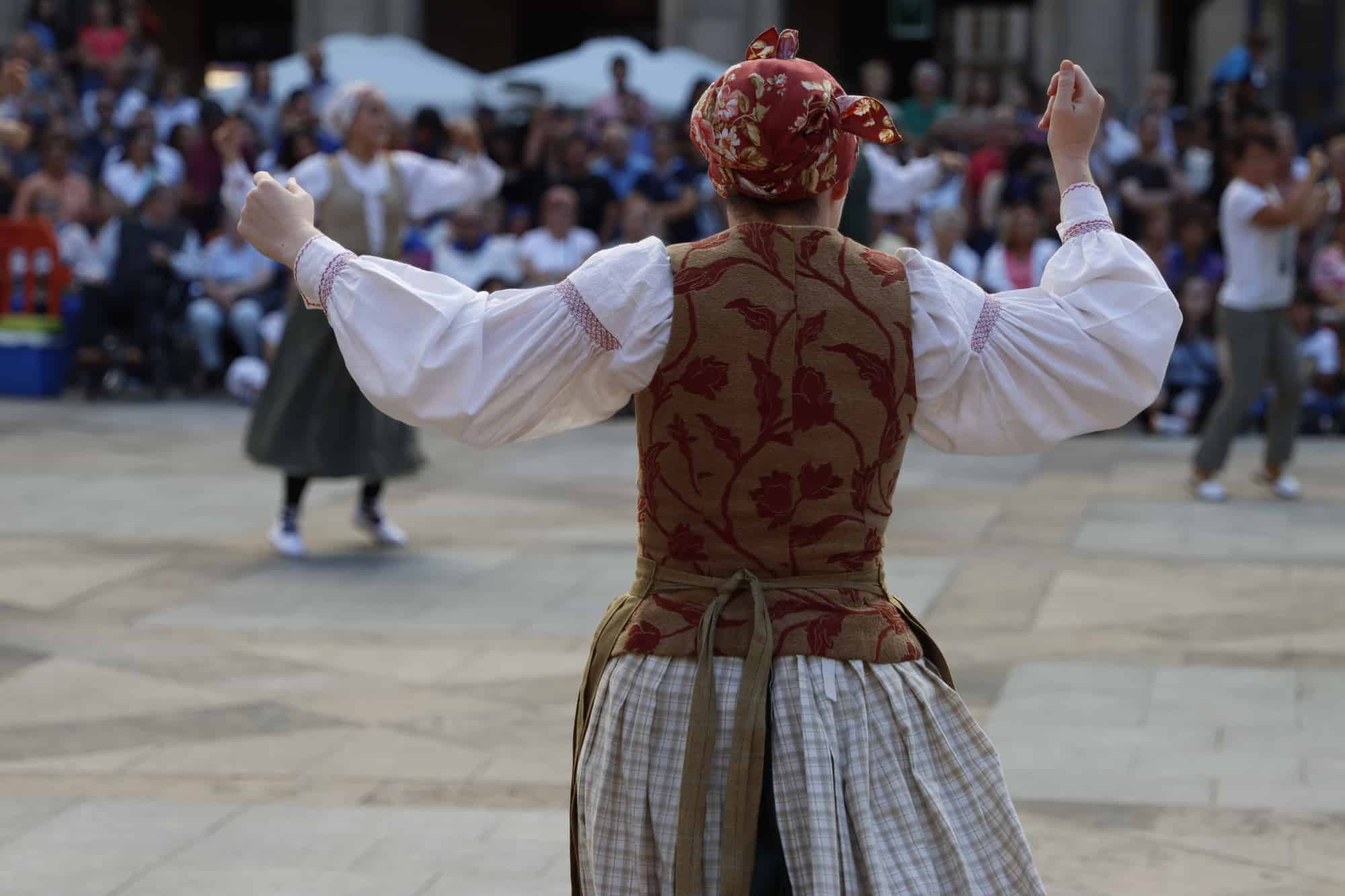
The traditional clothing of the Basque Country is very diverse, as each region has its own cultural costumes. However, the “Baseritarra” is one of the most popular Basque costumes. Its historical roots can be found in the 18th century when the locals would wear it as an everyday garment. Today, Baseritarra is a living symbol of attachment to culture and tradition.
This Traditional Basque clothing includes different tunics of similar styles and common elements: women wear long skirts and traditional headdresses, while men wear trousers, loose tops or shirts, and txapela (beret). Shoes for men and women include abarques (lace shoes), barquets or espartines (espadrilles).
In August, Baseritarra is in full bloom during the Semana Grande festival. Tourists worldwide visit San Sebastian during the best time of the year and indulge in traditional dance, folk music, and cultural parades. This celebration is a tribute by the locals to the cultural heritage of the Basque Country.
San Sebastian has some of Spain’s best gems of traditional clothing that shine the brightest during the festive.
5. Cataluña’s Pride: Hereu and Pubilla
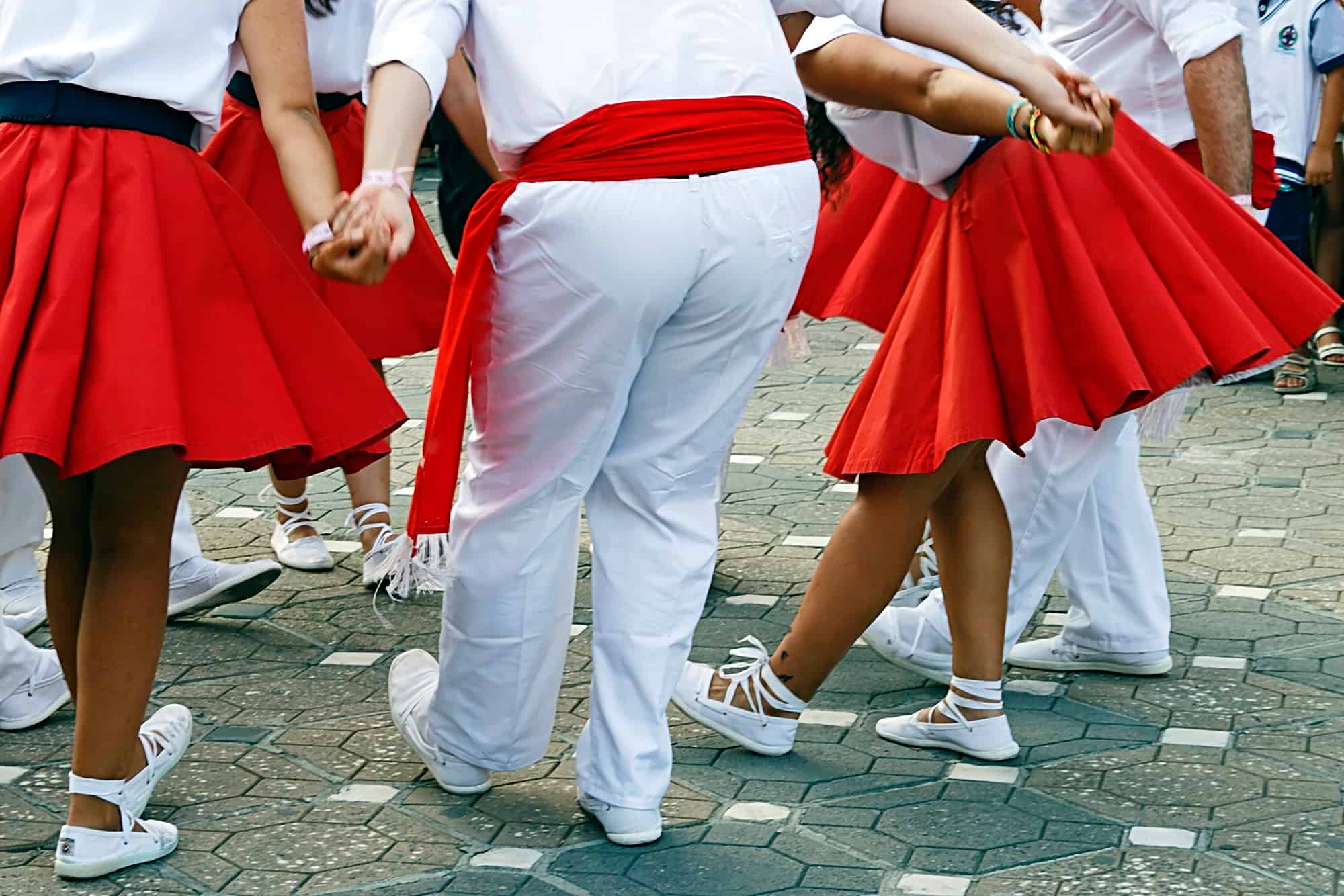
Traditional Catalan clothing is called “Traje de Hereu” for men and “Traje de Pubilla” for women. Conventionally, in rural families of the eighteenth and nineteenth centuries, when there was no male heir, the family’s eldest daughter, “Pubilla,” inherited the houses and estates of ancient Catalonia.
Although this practice is not seen today, cultural institutions in Catalonia support the naming of Pubillas and Hereus to represent their cities symbolically. It is truly an honor for those chosen to participate in such a public event that happens only once a year.
These include the “Barretina” (a long woolen hat, usually purple or red), the “faixa” (a wide sash for men), and the “ret” (a thin mesh covering on a woman’s head). The most popular shoe is the “espardenia” or espadrille.
Barcelona promises an exciting journey through time, delicious unfermented wine tastings, and an array of traditional clothing. If you visit Barcelona in September, don’t miss out on “The Cubelles Grape Harvest Festival,” where you can see Cataluña’s Hereus and Pullias come to life.
6. The Elegant Mantilla
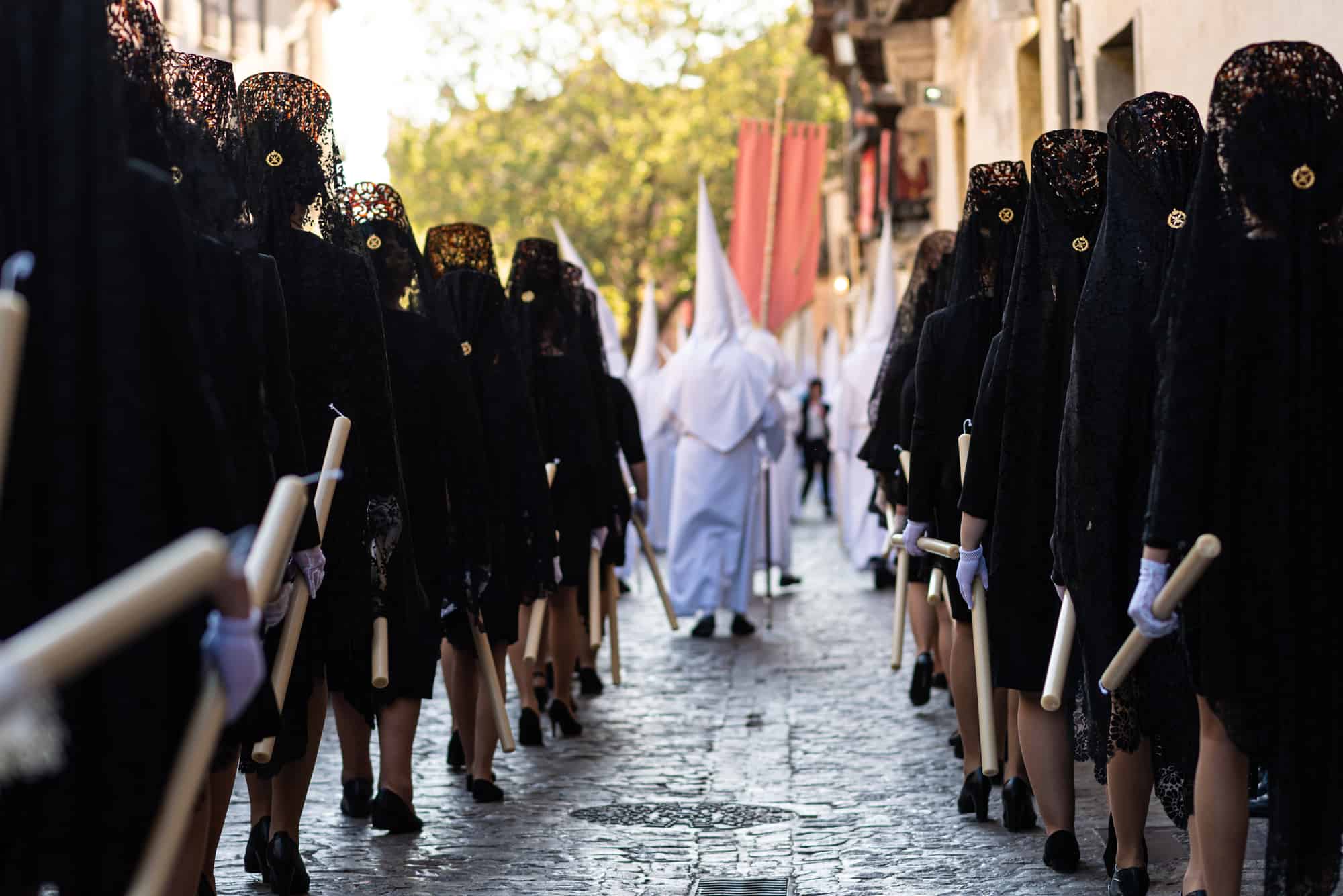
Some traditional clothing in Spain is preserved while some was lost. But certainly, one important tradition that is not lost is the Mantilla. Its origins can be traced back to Iberian times when it was customary for women to cover their heads with a veil or cloak. It is only seen in festivals, holy weeks, churches, and weddings today. This is not easily seen in other events or ceremonies.
Spanish women often wear the mantilla during festivals like Feria de Abril. It is also part of Spanish weddings, where brides are seen flaunting this traditional piece of clothing. The elegant Mantilla is that perfect mix of tradition and style that can never go out of fashion.
7. The Stunning Peineta
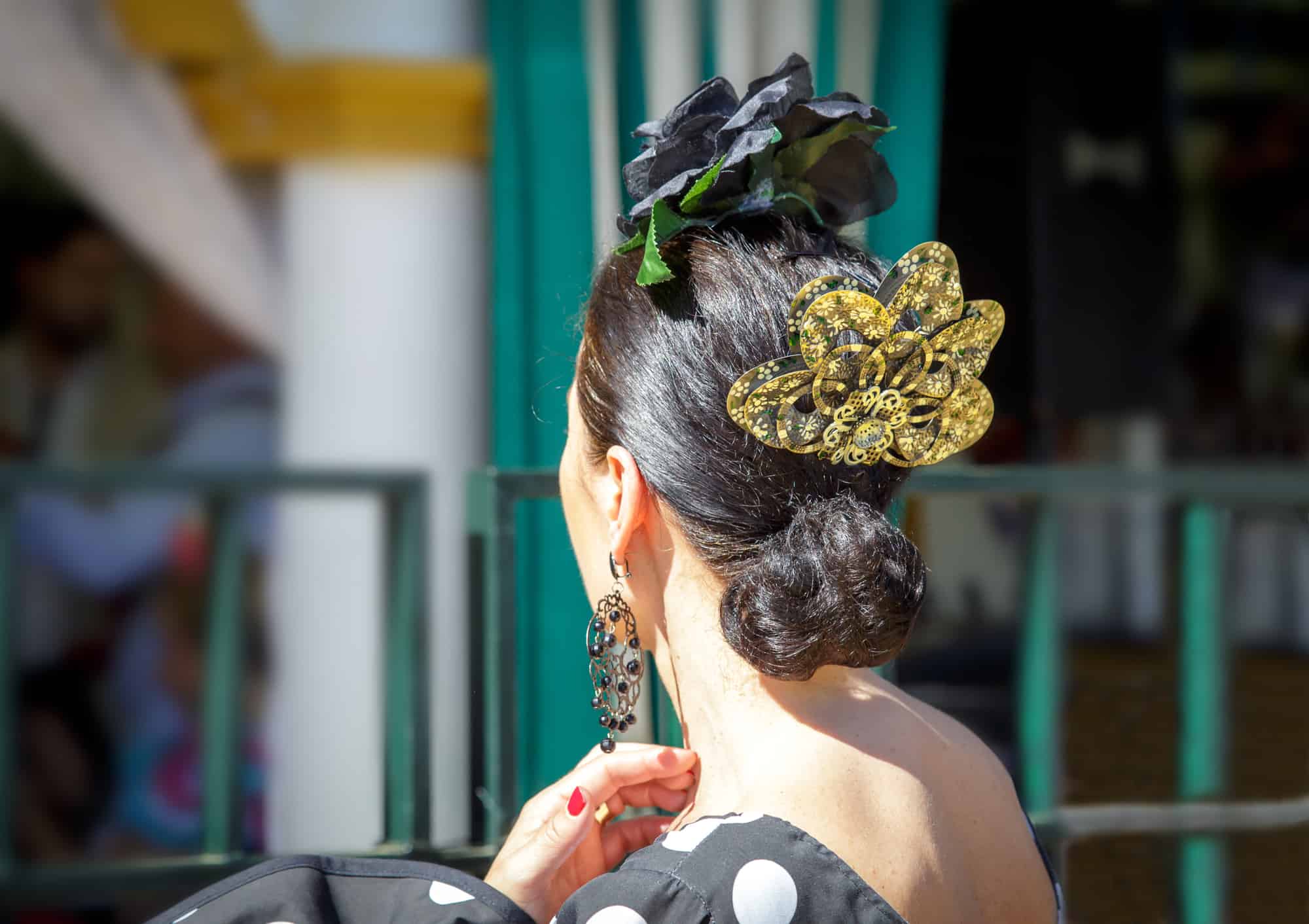
Peinetas are large decorative combs that Spanish women often wear under a veil. Traditionally, during the 18th century, Catholic women used to wear a Peineta and cover their heads with a veil when attending church services. This stunning hair comb is mainly used for special occasions such as weddings, bullfights, parades, and performances of traditional flamenco music. These are most commonly seen during festivals like the Feria de Abril.
Foreigners often confuse Peineta for a mantilla, but in reality, these are different hair accessories. Peineta is a hair comb used to enhance the elegance of a mantilla, i.e. a veil. So, the next time you spot a woman in Spain wearing a Peineta, don’t mix it with Mantilla.
8. The Traditional Gilet
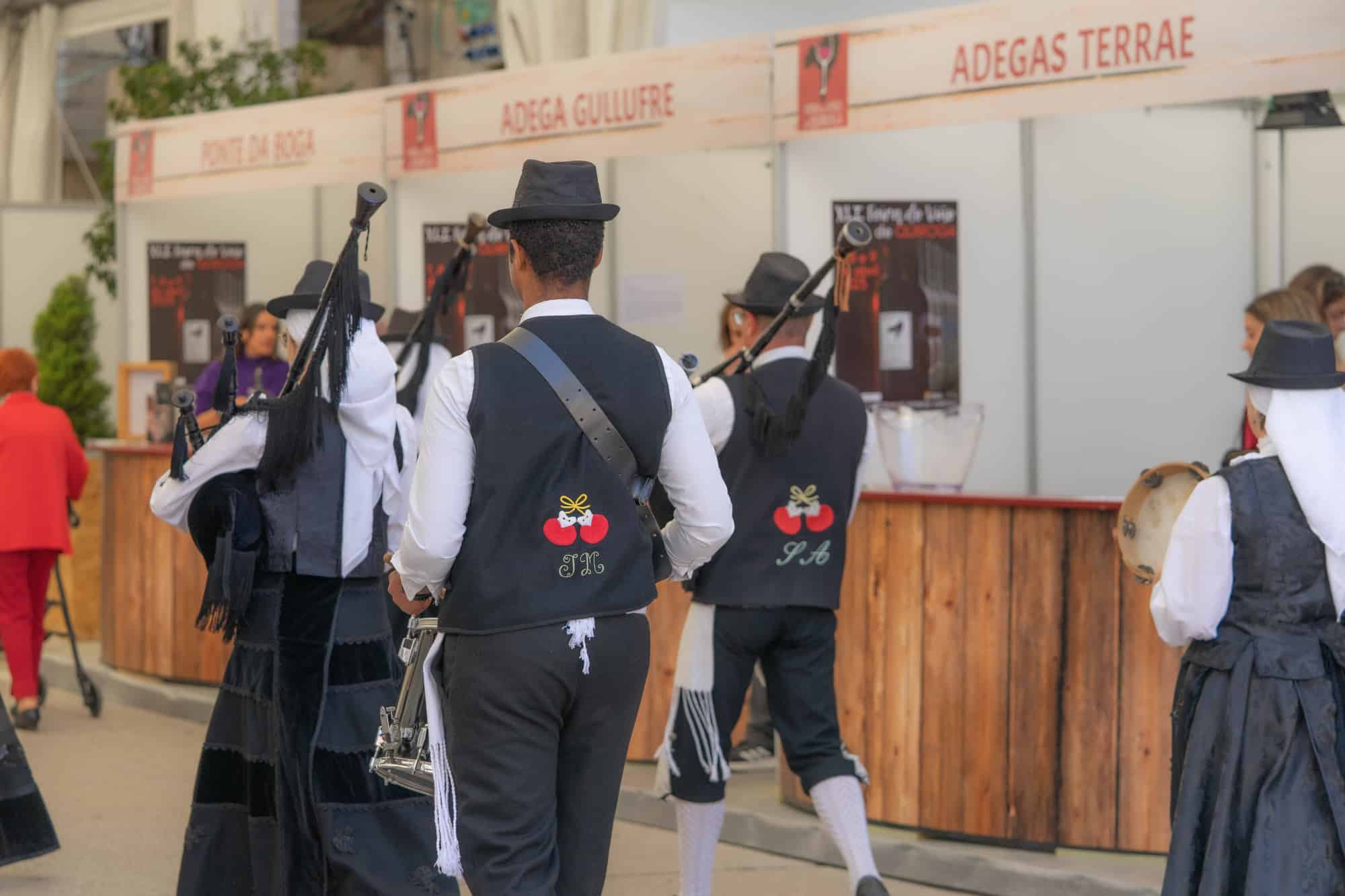
A gilet is a sleeveless jacket, just like a vest or waistcoat, and it is an important part of traditional clothing in Spain. Historically, Gilets were sewn and embroidered in the 19th century. Today, the gilet is popular in the West because it has a unique property of thermal insulation that no other item of clothing can provide.
Not only is it convenient to create a wearable extra layer, but you can easily add or remove it to your outfit. Gilets are making waves throughout the world. It’s the perfect piece for solving seasonal weather conundrums of what to wear and is often light enough to roll up and fit in a briefcase or backpack, making it a favorite travel companion.
9. Sombrero Cordobés: A Symbol of Spain
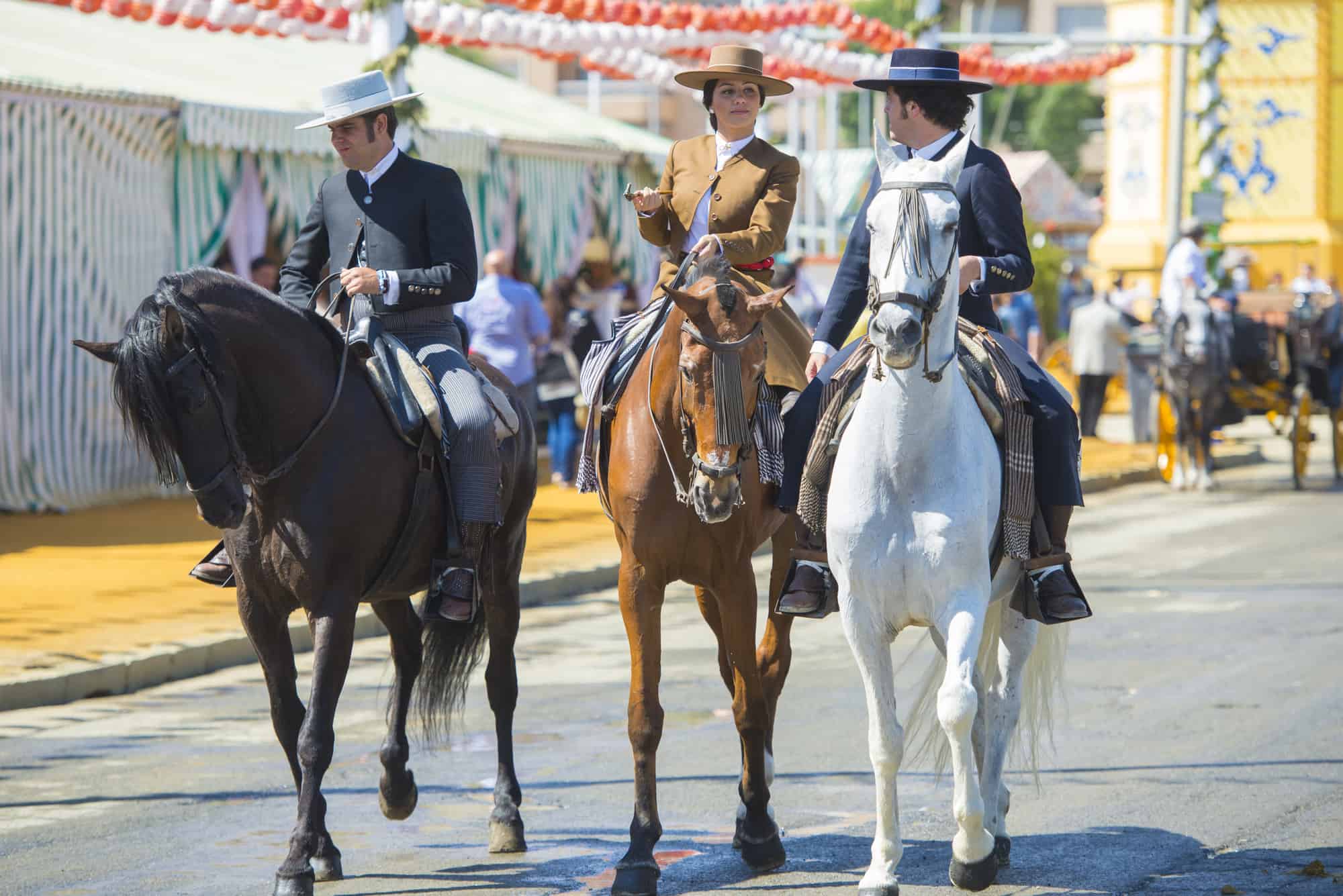
Sombrero Cordobés holds a very special place in the couture of traditional clothing in Spain. I have witnessed it in flamenco, bullfights, romerias, and all the famous Andalusian festivals. Traditionally, men wore this antique hat, while women used to wear a mantilla. Today, many Spanish women wear Sombrero Cordobés as a fashion statement to complement their flamenco dresses.
Hailing from Córdoba, this hat has become an iconic symbol of flamenco and bullfighting worldwide. Speaking of Córdoba, the city is also home to magnificent Moorish architecture in Spain, which always impresses the tourists. So, the next time you plan to visit Spain, don’t miss out on homage to this city and its cultural heritage.
10. The Festive Cachirulo
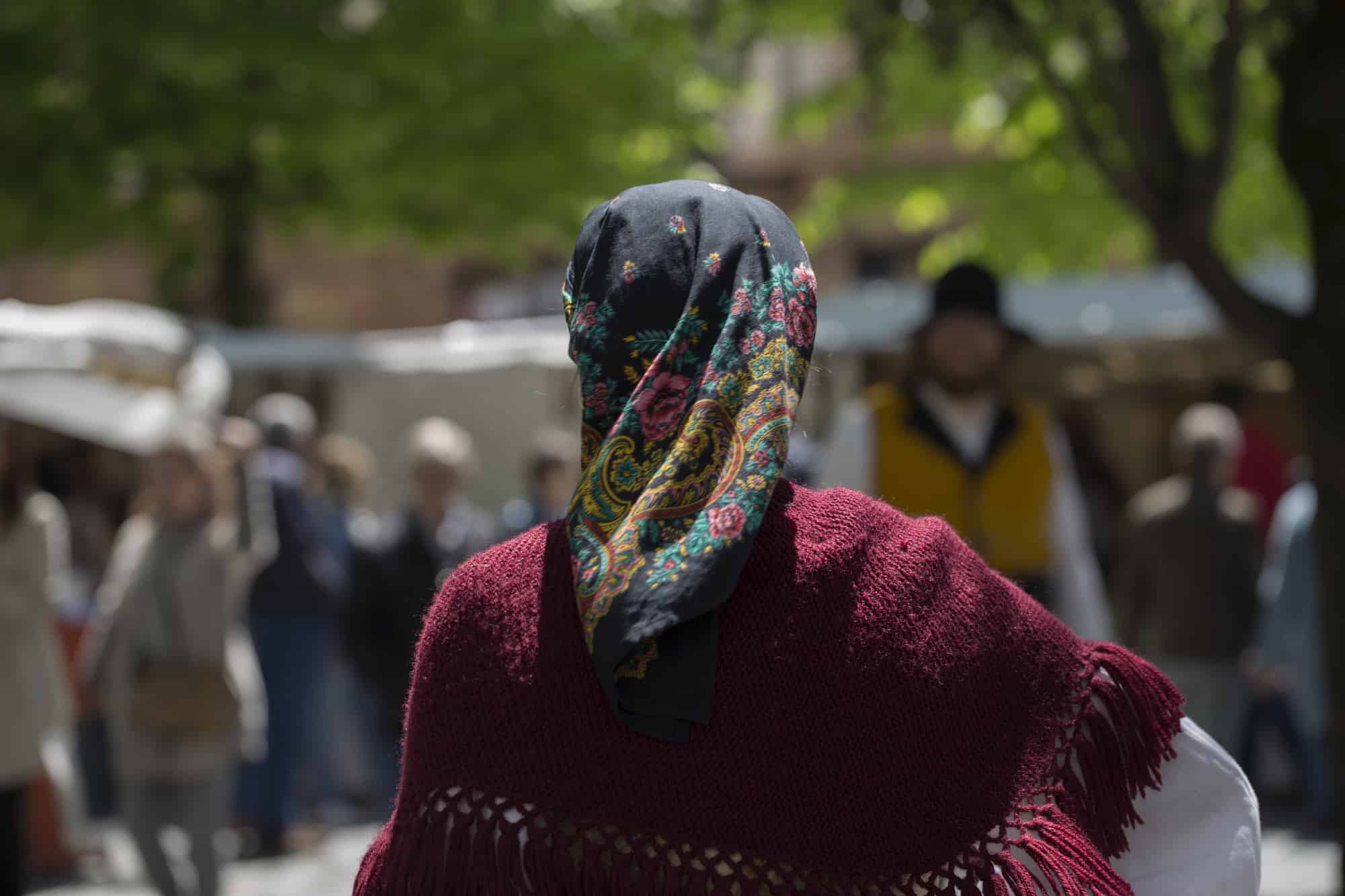
Cachirulo is a traditional Aragonese headscarf. The Moors first introduced this traditional hair accessory in the 17th century. During Argonese festive, men wear black knee-length trousers and a white shirt covered with a waistcoat. A red belt around the waist and the head covered with a “Cachirulo” (black and red handkerchief) is one of the most characteristic features of the costume.
More recently, the Cachirulo has become popular as a symbol of the Fiestas del Pilar. Argonese men wear it as a fashion statement instead of wearing other traditional baturro costumes. Cachirulo is a living testament to traditional clothing in Spain.
11. The Striking Barretina
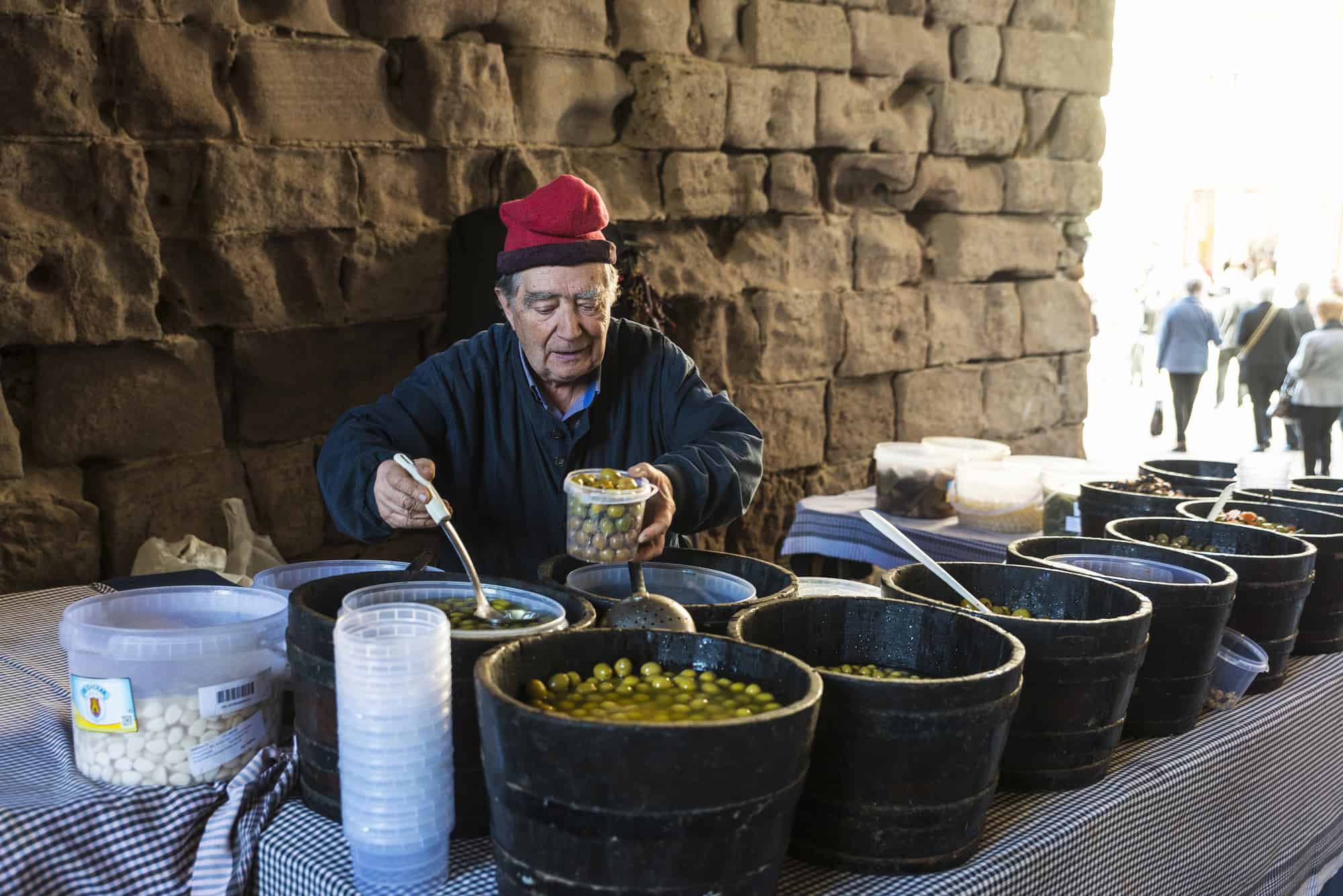
Pablo Picasso and Salvador Dali were great representatives of the Barretina. This traditional Catalan men’s hat is sack-shaped, made of wool, and offers perfect comfort and great craftsmanship. Traditionally colored red or purple, the Barretina symbolizes Catalonia’s cultural heritage. People from different cultures across the Mediterranean, such as Catalonia, Valencia, and Ibiza, wear it.
Nowadays, the Barretina is not widely used in everyday life but is often used in folk dances or as a symbol of Catalan identity. Visit Catalonia during the festivals and find out how the local Catalonians and dancers carry Barretina on their heads as a part of their iconic costumes. This attractive hat has transcended generations and left an indelible mark on the city’s past, present, and future!
If Barcelona feels too crowded for your preferences, I can recommend taking a Girona day trip from Barcelona for a refreshing change of scenery.
12. Cantabrian Albarca: More Than Just Footwear
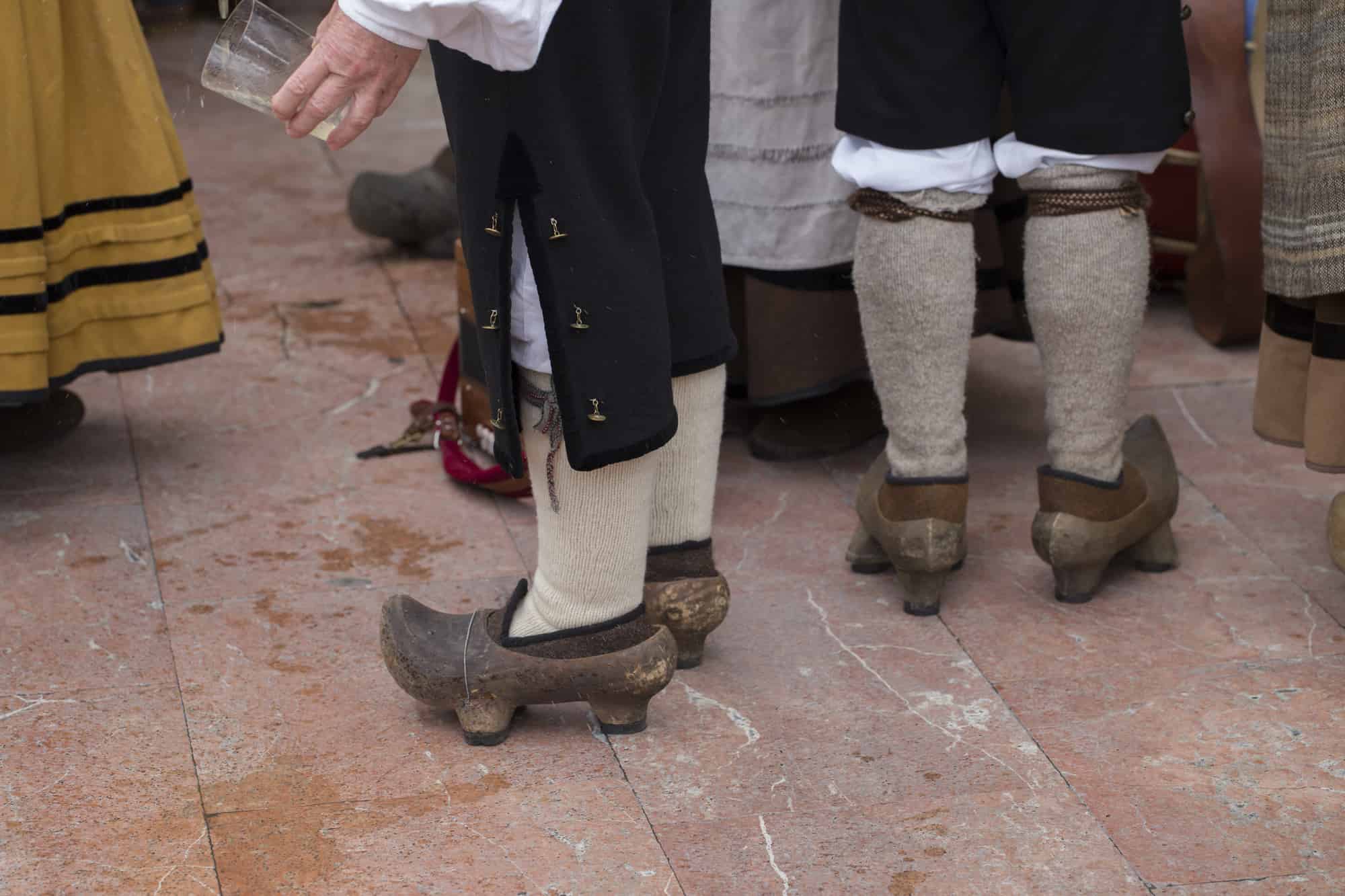
The number of unusual wooden shoes increases when entering the Cantabrian countryside, especially in small villages or hamlets. These are not just ordinary wooden shoes. They are “Albarcas”. Farmers and peasants wear these wooden shoes throughout Cantabria to protect against mud, snow, and cow dung.
Cantabrian Albarcas are hand-carved from a single piece of wood, usually beech, maple, or walnut. Underneath are small studs called “tarugos”. These spikes prevent unwanted objects (snow, mud, cow dung) from entering the shoe as you walk.
Cantabria is a place full of cool traditional tidbits like these wooden clogs that make the culture of this small area so unique and a joy to stumble upon.
13. The Cozy Zamarra
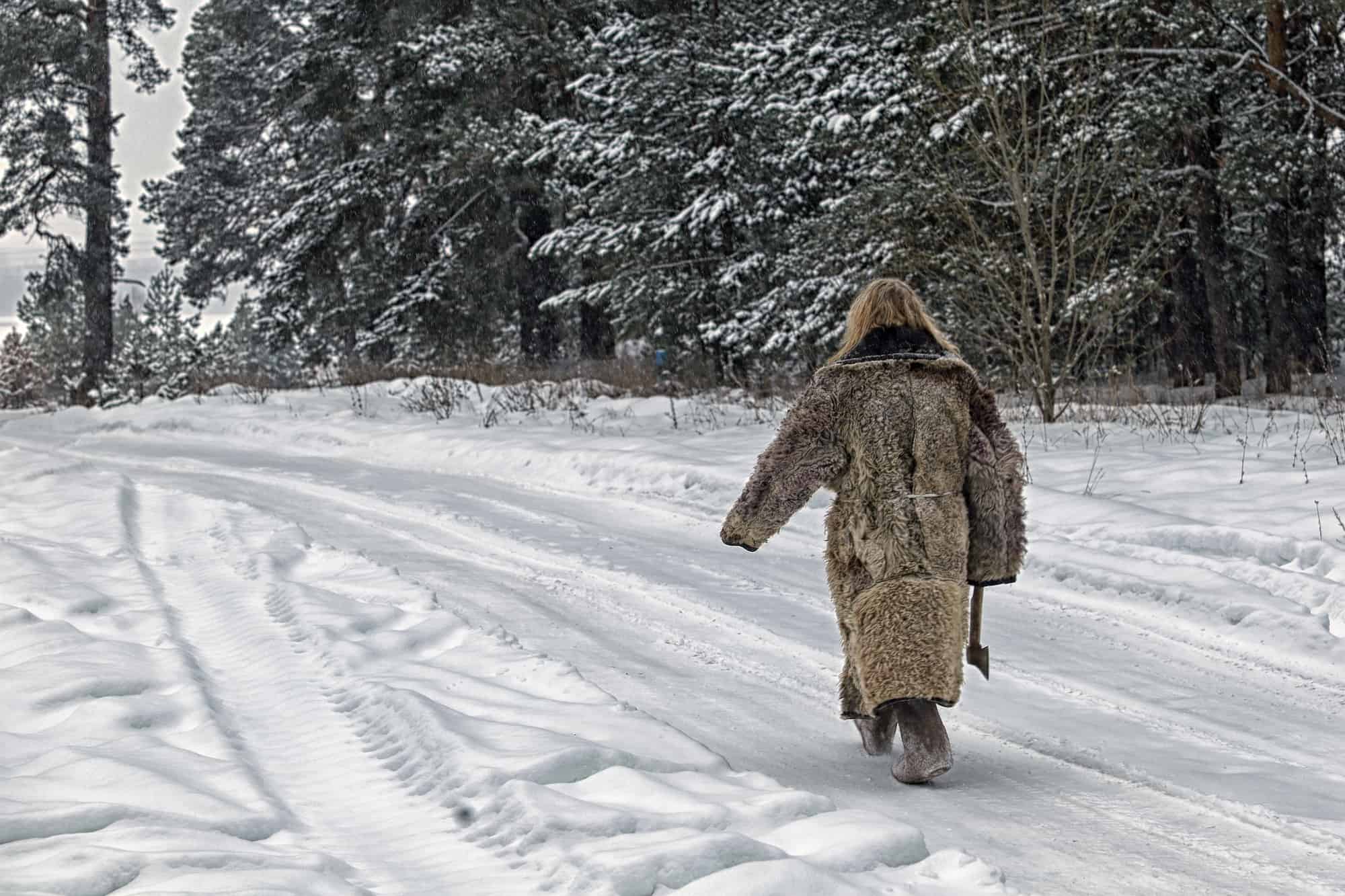
Zamarra is a long sheepskin coat worn by Spanish shepherds. This iconic piece of traditional Spanish clothing is particularly popular in the cold regions of Spain. Traditionally, people started wearing it in the 18th century. Today, almost everyone in colder regions has one; it is waterproof. It is made of sheepskin and is an ideal travel jacket, especially in the Basque Country.
Zamarra is loved for its water-resistant, warm, and stylish properties. It is a must-wear for everyone in the country. Its timeless charm comes from the Spanish culture and the elegant tradition of wearing it.
14. Canario: The Canary Islands
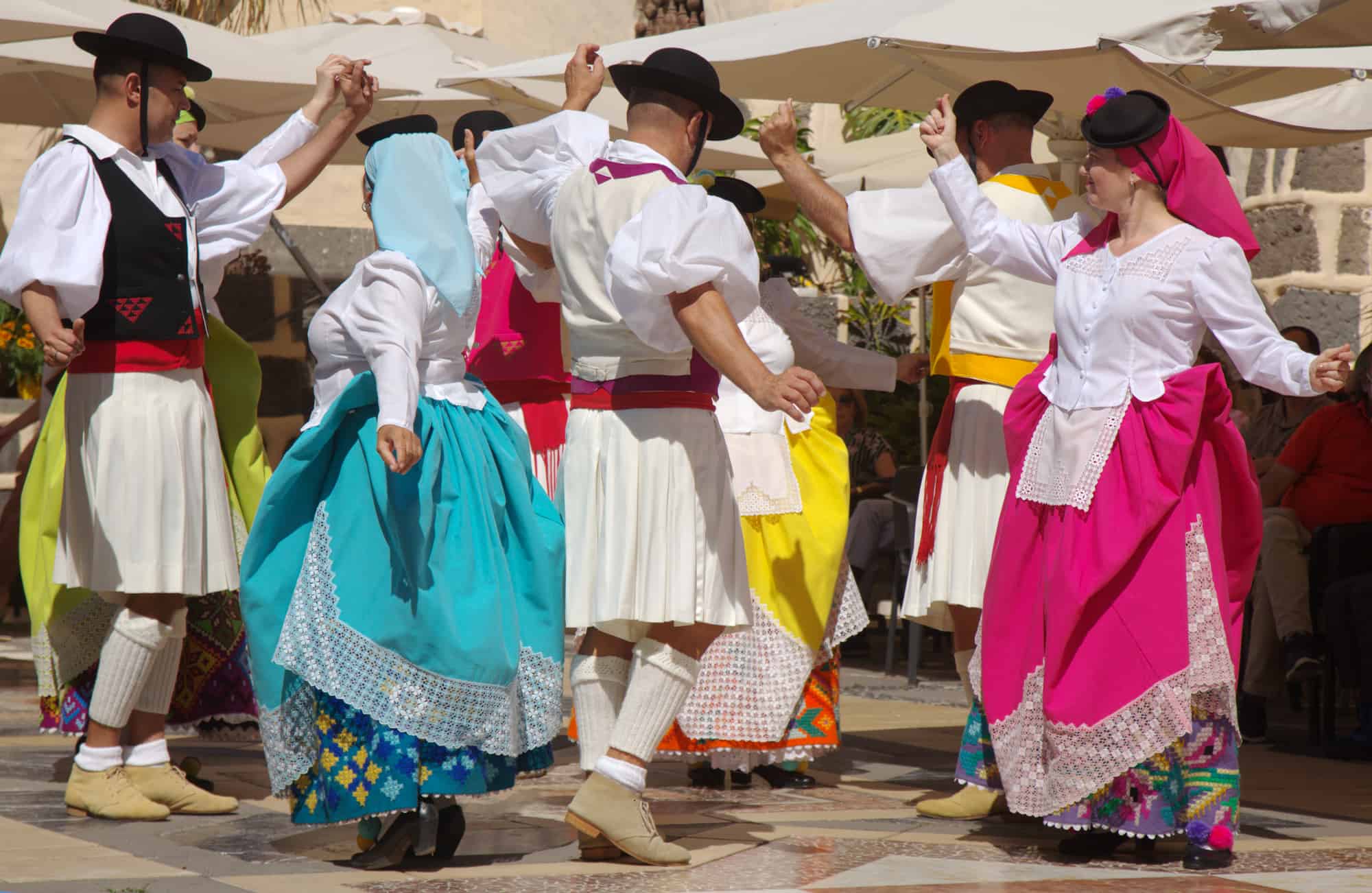
The Canary Islands are known as the sunny heart of Europe. These islands have a mild climate and several outstanding natural attractions. Five of these seven islands have been declared the biosphere reserves, and the archipelago has four national parks. These are also home to various traditional clothing in Spain.
Women doll up in “traje de maga,” their colorful ensembles of richly embroidered blouses and long skirts. Men wear a plain white dress called “traje de lino” which is perfect for the tropical climate.
You can also enjoy the fantastic carnival in Tenerife and Gran Canaria in February. From Tenerife’s colorful carnival to Gran Canaria’s lively Rama festival, the Islands bloom to the fullest, making Gran Canaria and Tenerife worth a visit. The beauty of these festivals is further enhanced by the traditional Canarian clothing, which is the heart of every fiesta.
So, these holidays, plan a visit to The Canary Islands and witness the most impressive volcanic landscapes of Lanzarote, the beaches and their sand dunes of Fuerteventura, and the green forests of La Palma. But don’t forget to drape “traje de manga” or “traje de lino” of your choosing to enjoy this place to the fullest.
15. Riojano: A Nod to Wine Country’s Tradition
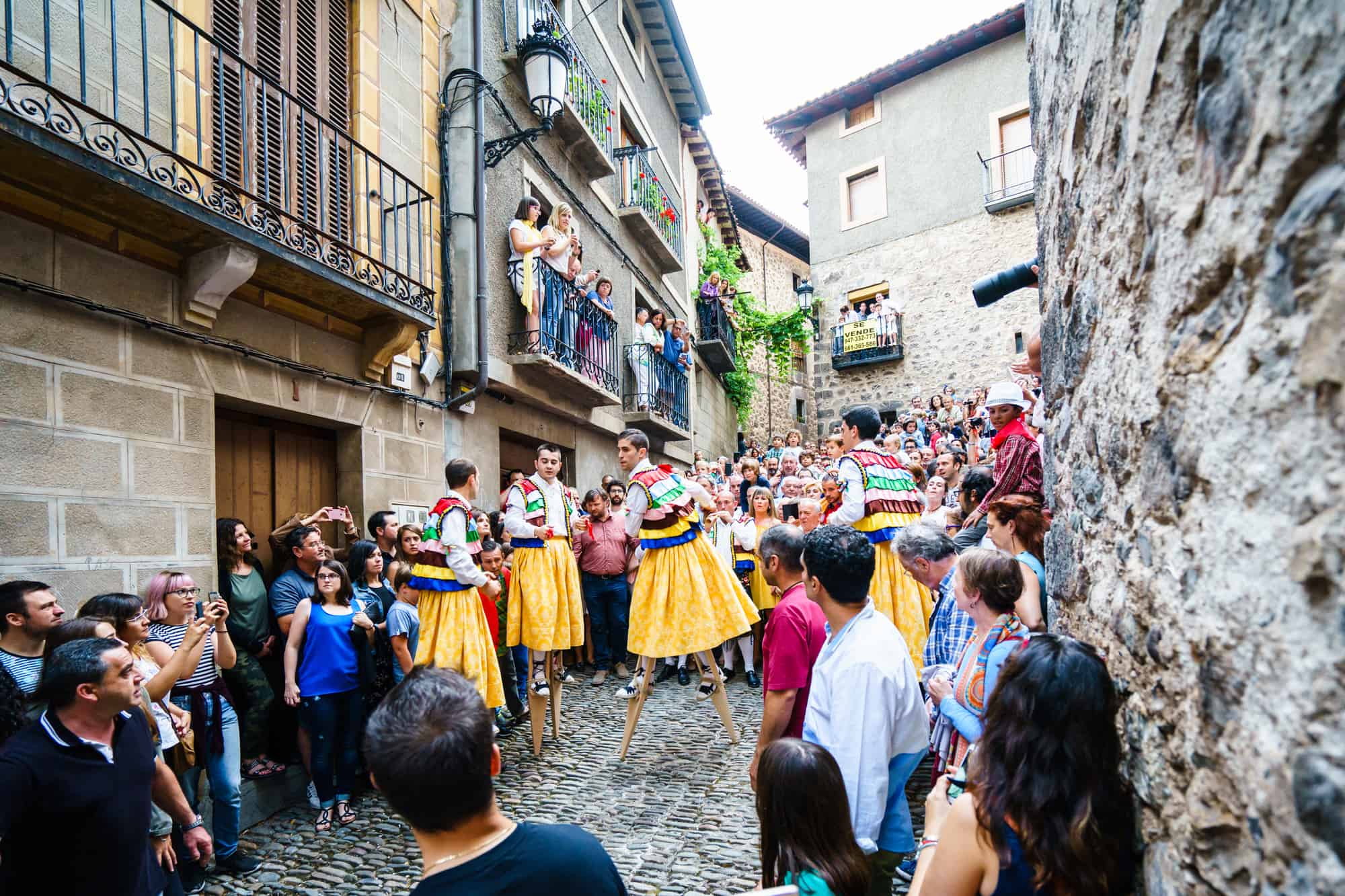
While rolling hills, mountains, and sunny coastlines make Spain a great travel destination, the country also produces some of the world’s best wines. If you should know one wine region in Spain, it’s Rioja.
Along with wine, La Rioja is home to the most diverse traditional clothing in Spain. These centuries-old clothing have been closely associated with the region’s wine culture, local festivals, and holiday traditions.
In La Rioja, one finds several different attires. Men usually wear crisp white shirts, and dark trousers, with two colored bands on the side, four bands on the arms, and a colorful scarf around the neck. On the other hand, women wear vibrant yet intricately detailed dresses, along with patterned headdresses.
These traditional attires take the central stage during Spanish wine festivals. From Batarra de Vino to the San Mateo wine harvest festival, the country’s two most valuable cultures come along, i.e., its traditional clothing and its wine, of course.
Search the site
Popular Destinations
Just letting you know
When you buy something through our links, we’ll earn a small commission—don’t worry, it won’t cost you any extra! It’s a win-win, right?
Exclusive Heymondo Travel Insurance Offer
Planning a trip? Make sure you’re covered! We’ve teamed up with Heymondo to give our readers a special deal: 5% off travel insurance. Grab this deal and know you’re looked after on your next trip.

